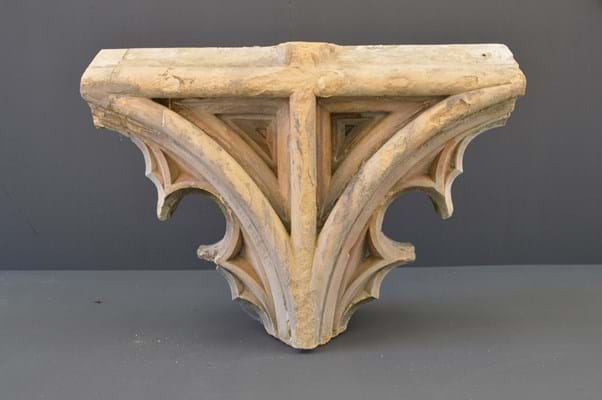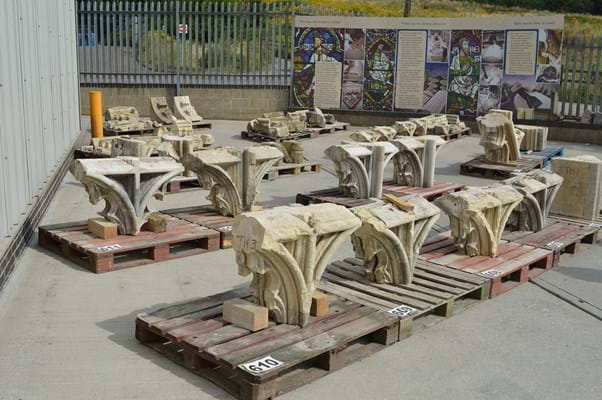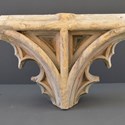Canterbury Auction Galleries are holding a sale featuring more than 140 lots of stone from one of the city cathedral’s largest and finest windows.
The stone has had to be removed from the Great South Window during major conservation work and the pieces being sold range in size and shape, with possible uses from large garden ornaments to smaller ones that could be used as book ends.
Many date back to when the Gothic-style window was built in the early 15th century and retain the detailed carving and markings of the stonemasons who have worked on the window during the centuries. Other stones are later replacements.
Much of the huge 16m high and 7m wide window has had to be rebuilt, in one of the largest projects of its kind ever undertaken in Europe, after a fall of stone in 2009 identified serious structural problems.
Extensive work by the cathedral’s own stonemasons and stained-glass conservators is now nearing completion and the team has restored the structure to one that will again hold the world-renowned, early medieval stained glass depicting the Biblical ancestors of Christ.
Future conservation
The auction has been organised by Canterbury Cathedral Trust – the independent charity which supports the cathedral and has helped meet the unexpected cost of replacing the window by raising £2.5m from private and charitable sources. The money raised from the auction will go towards future conservation work.
The Canterbury Auction Galleries will be further supporting the event by not charging auctioneer’s fees. Buyer’s premium will also be waived.
It takes place at The Cathedral Stonemasonry Yard in Broadoak.
The auction house’s general manager, David Parker, said: “This sale is such an historic venture and we are extremely pleased to have the opportunity to be involved with the cathedral.”
Viewing days are 2-5pm, September 17-18. The auction will be available to view soon on live bidding platform thesaleroom.com. Phone bids will not be available, however. A catalogue will be published on September 1. It can be bought at the Canterbury Cathedral Shop for £10 or viewed online at thesaleroom.com or the auction house website. No estimates have been set so far.
Canterbury Cathedral factfile (from canterbury-cathedral.org)
- The first cathedral was established by St Augustine, the first Archbishop of Canterbury, who arrived on the coast of Kent as a missionary to England in 597AD. He came from Rome, sent by Pope Gregory the Great.
- Augustine’s original building lies beneath the floor of the Nave. It was extensively rebuilt and enlarged by the Saxons, and rebuilt completely by the Normans in 1070 following a major fire. There have been many additions to the building over the last nine hundred years, but parts of the Quire and some of the windows and their stained glass date from the 12th century.
- The cathedral – where Thomas Becket was murdered in 1170 - has suffered through the centuries. Its work as a monastery came to an end in 1540, when the monastery was closed on the orders of King Henry VIII. Its role as a place of prayer continued. During the Civil War of the 1640s, the cathedral suffered damage at the hands of the Puritans. Much of the medieval stained glass was smashed and horses were stabled in the Nave. After the Restoration in 1660, several years were spent in repairing the building.
- In the early 19th century, the north-west tower was found to be dangerous, and, although it dated from the time of Archbishop Lanfranc, who had rebuilt the cathedral as a Norman church by 1077, it was demolished in the early 1830s and replaced by a copy of the south-west tower, thus giving a symmetrical appearance to the west end of the cathedral.
- During the Second World War, the Precincts were heavily damaged by enemy action and the cathedral’s library was destroyed. Thankfully, the cathedral itself was not seriously harmed, due to the bravery of the team of fire watchers, who patrolled the roofs and dealt with the incendiary bombs dropped by enemy bombers.









